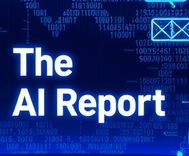As inflation continues to rise, some fisheries turn to artificial intelligence to lower costs

The AI Report
Daily AI, ML, LLM and agents news
Navigating Economic Headwinds: How AI is Revolutionizing Alaskan Fisheries
The waters of the Alaskan fishing industry, a cornerstone of the state's economy, are facing turbulent times. With persistent inflation driving up operational costs, many fisheries find themselves at a crucial crossroads. Traditional methods of regulatory compliance, while vital, have become increasingly expensive, pushing the industry to seek innovative solutions. The good news? A groundbreaking initiative is underway, leveraging the power of Artificial Intelligence to chart a more sustainable and cost-effective course for Alaska's hardworking fishermen.
The Challenge: Rising Costs vs. Fixed Returns
For years, federal regulations have mandated electronic monitoring (EM) or onboard human observers for a percentage of trips for vessels over 40 feet participating in federal fisheries. While essential for data collection and resource management, the cost of these monitoring programs has skyrocketed. Lauren Howard, policy coordinator for Alaska’s Longline Fishermen’s Association (ALFA), highlights the core issue: "That program has been running at a bit of a deficit. We have a 3% cap on our cost recovery. That’s a federal rule that they can only charge up to 3% to pay for the program. So, they’re constantly looking for efficiencies."
The grim reality is that as the cost of flying observers or reviewing footage escalates, the ex-vessel price fishermen receive for their catch has not kept pace. This imbalance creates a significant deficit, leading to industry consolidation and even closures. The need for a more economically viable monitoring solution has never been more urgent.
The Solution: AI-Powered Efficiency on the High Seas
Thanks to a generous $485,000 grant from the National Fish and Wildlife Foundation, ALFA is spearheading a transformative project. They are partnering with the Canadian firm Archipelago Marine Research to significantly enhance its existing FishVue AI tool. This advanced AI is being specifically trained for Alaskan sablefish and halibut fixed gear fisheries, promising a new era of efficiency and cost reduction.
Archipelago was a natural choice for ALFA, already serving as the primary EM provider for much of the fixed gear fleet. This existing technological foundation allows for seamless integration and expansion of the AI capabilities. By automating much of the data review process, the new system will drastically cut down on the labor-intensive and costly human review traditionally required.
Tangible Benefits for Fishermen and the Industry:
- Significant Cost Reduction: The primary benefit of integrating AI is the direct reduction in operational expenses associated with electronic monitoring. By automating the review of footage, the need for costly human hours is diminished, bringing down the overall program cost.
- Increased Efficiency: AI can process vast amounts of video data much faster and more consistently than human reviewers, leading to quicker insights and more streamlined compliance processes.
- Improved Economic Viability: By lowering the burden of monitoring costs, this technology helps bridge the gap between rising operational expenses and stagnant fish prices, contributing to the long-term sustainability and profitability of Alaskan fisheries.
- Alignment with Federal Goals: This pilot project directly addresses the National Oceanic and Atmospheric Administration (NOAA) Alaska Region Electronic Technologies Plan 2021-2025, which prioritizes "cost effective monitoring" as a critical objective for the fishing industry and regulators alike.
- Enhanced Data Accuracy: While not explicitly stated, AI's ability to learn and improve could lead to more consistent and accurate data collection, benefiting both fishery management and conservation efforts.
A Blueprint for Future Innovation
The successful implementation of AI in Alaskan fisheries sets a powerful precedent. It demonstrates that embracing advanced technology is not just about modernization; it's a strategic imperative for industries facing economic pressures and complex regulatory landscapes. For other sectors grappling with similar challenges, this initiative offers a clear blueprint:
- Identify Cost Bottlenecks: Pinpoint areas where traditional, labor-intensive processes are driving up expenses.
- Explore Technological Solutions: Research and evaluate how AI, automation, or other emerging technologies can address these bottlenecks.
- Seek Strategic Partnerships: Collaborate with technology providers and secure funding or grants to de-risk pilot projects.
- Focus on Scalability and Integration: Prioritize solutions that can be expanded upon existing infrastructure and seamlessly integrated into current workflows.
This move by Alaska’s Longline Fishermen’s Association is more than just an upgrade; it's a strategic investment in the future resilience and prosperity of Alaskan fisheries, proving that smart technology can indeed be the tide that lifts all boats in challenging economic waters.

The AI Report
Author bio: Daily AI, ML, LLM and agents news
